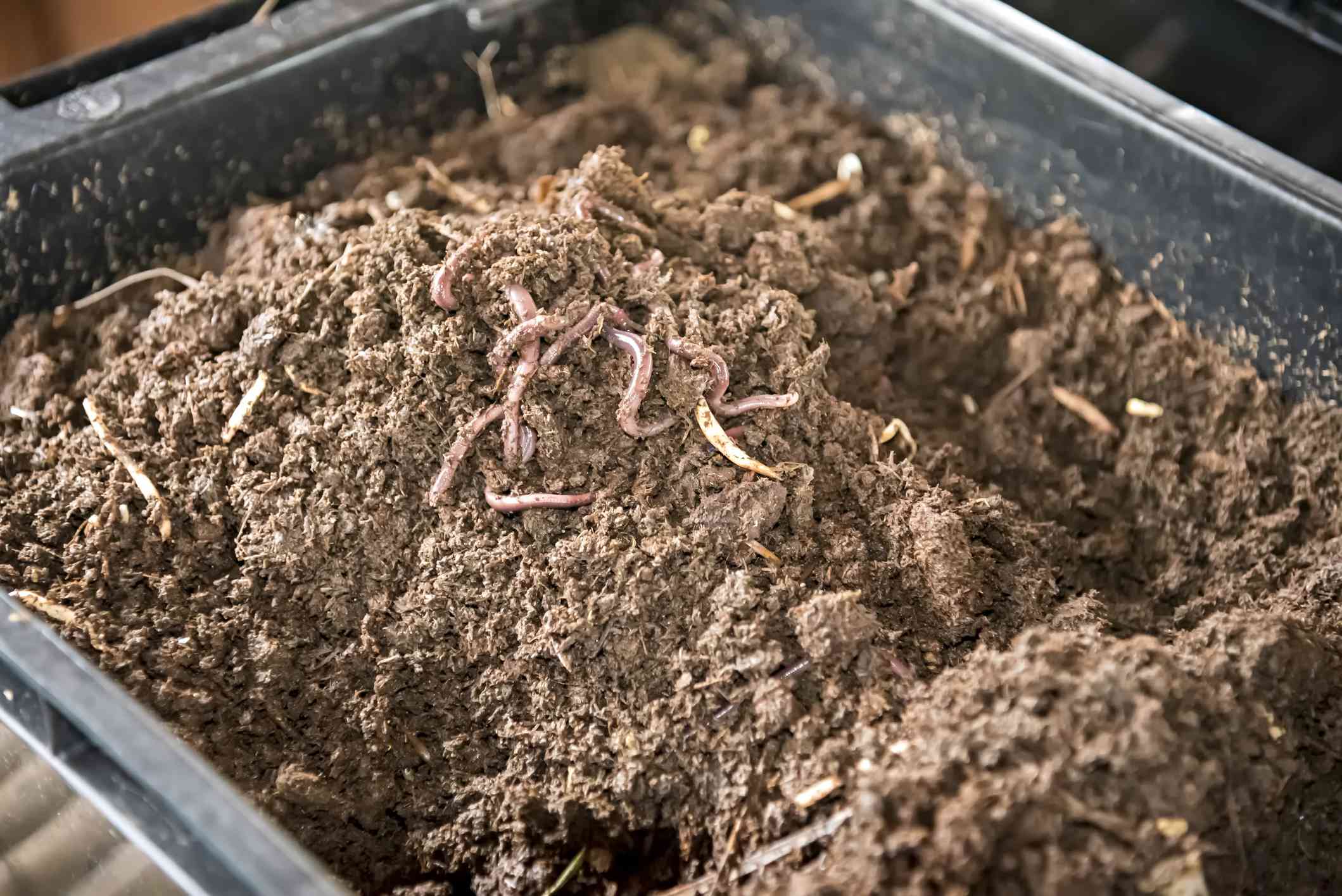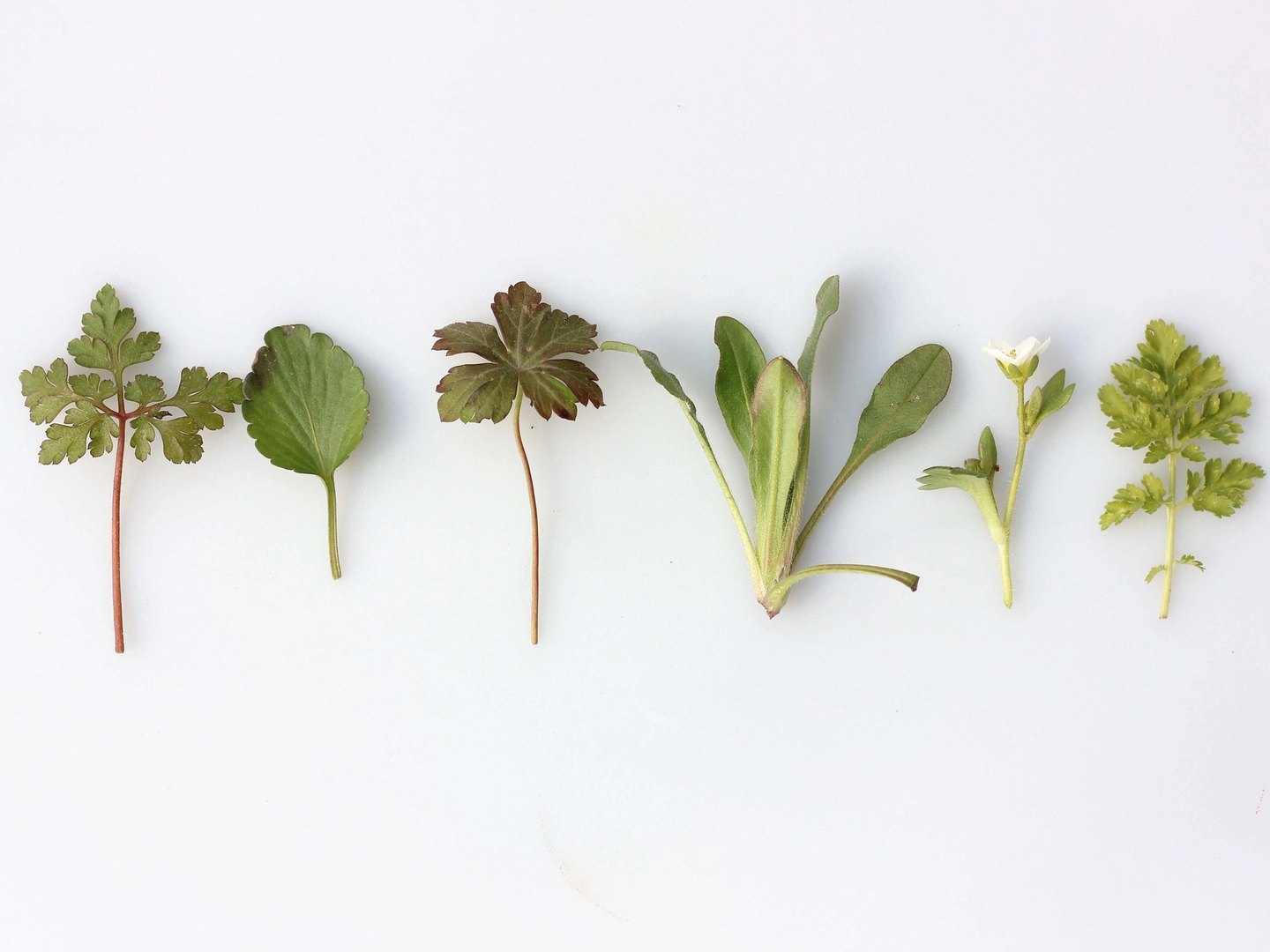Home>Gardening News and Trends>Latest News>How Can Insects Help Recover Dna Evidence


Latest News
How Can Insects Help Recover Dna Evidence
Modified: January 22, 2024
Discover the latest news on how insects can assist in recovering DNA evidence, potentially revolutionizing forensic investigations.
(Many of the links in this article redirect to a specific reviewed product. Your purchase of these products through affiliate links helps to generate commission for Chicagolandgardening.com, at no extra cost. Learn more)
Table of Contents
- Introduction
- Importance of DNA Evidence in Criminal Investigations
- Challenges in Recovering DNA Evidence
- The Potential Role of Insects in DNA Recovery
- Factors Influencing the Presence of Insects at Crime Scenes
- Insect-Mediated DNA Transfer Mechanisms
- Techniques for Sampling and Preserving Insects for DNA Analysis
- Case Studies Demonstrating the Use of Insects in DNA Recovery
- Limitations and Future Directions in Insect-Assisted DNA Recovery
- Conclusion
Introduction
DNA evidence plays a crucial role in criminal investigations. It serves as a powerful tool in identifying suspects, linking them to crime scenes, and providing substantial evidence in court proceedings. However, the recovery of DNA evidence is not always a straightforward process. Various challenges, such as degraded or limited DNA samples, can hinder investigators’ efforts to obtain conclusive results.
In recent years, researchers and forensic experts have turned to unconventional methods to overcome these challenges. One such method involves utilizing insects found at crime scenes to assist in the recovery of DNA evidence. Insects, particularly blowflies and beetles, have been found to play a significant role in facilitating the transfer and preservation of DNA.
This article explores the potential of insects in aiding the recovery of DNA evidence. We will discuss the importance of DNA evidence in criminal investigations, the challenges associated with its recovery, and the various mechanisms by which insects can assist in the process. Furthermore, we will delve into the factors influencing the presence of insects at crime scenes, techniques for sampling and preserving insects for DNA analysis, and real-life case studies showcasing the successful utilization of insects in DNA recovery.
By exploring the role of insects in DNA recovery, we hope to shed light on an innovative approach that can enhance current forensic techniques and contribute to the advancement of criminal investigations.
Importance of DNA Evidence in Criminal Investigations
DNA evidence has revolutionized the field of criminal investigations. It can provide definitive links between individuals and crime scenes, unravel complex cases, and bring justice to the victims and their families. The unique DNA profile of each person acts as their biological fingerprint, making it a highly reliable and accurate form of evidence.
One of the primary uses of DNA evidence is in the identification of suspects. By comparing DNA samples collected from crime scenes to known DNA profiles in databases, investigators can narrow down their search and establish connections between the perpetrator and the crime. This has led to the successful solving of countless cases, including cold cases that had remained unsolved for years.
Moreover, DNA evidence can also be used to exonerate individuals who have been wrongly convicted. By reanalyzing DNA samples and comparing them with the profiles of convicted individuals, innocent people have been proven innocent and subsequently released from prison. DNA evidence has the power to provide irrefutable proof of innocence or guilt, acting as a safeguard against wrongful convictions.
Besides identification, DNA evidence can also be vital in linking suspects to specific crimes. Biological materials left behind at crime scenes, such as blood, hair, or saliva, can be analyzed for DNA. This analysis can establish a direct link between the suspect and the crime, strengthening the prosecution’s case and providing crucial evidence for conviction.
Furthermore, DNA evidence can also be used to connect different crime scenes together, potentially revealing serial offenders and patterns of criminal behavior. By analyzing DNA profiles from multiple crime scenes, investigators can identify commonalities and establish links between seemingly unrelated cases. This can help police agencies prioritize investigations, allocate resources effectively, and prevent future crimes.
Given its accuracy and reliability, DNA evidence holds great weight in courtrooms. Its objective nature and scientific basis make it persuasive to judges and juries, often leading to more successful prosecutions. The use of DNA evidence has transformed the criminal justice system, making it more robust, fair, and effective.
Challenges in Recovering DNA Evidence
While DNA evidence is a powerful tool in criminal investigations, there are several challenges associated with its recovery. These challenges can impede the successful extraction and analysis of DNA, potentially hindering the investigation process and limiting the use of DNA evidence in court proceedings.
One of the significant challenges is the degradation of DNA over time. Environmental factors such as exposure to sunlight, moisture, and extreme temperatures can cause DNA to break down, leading to a loss of crucial genetic information. This degradation can make it difficult or even impossible to obtain a complete and usable DNA profile for identification purposes.
Another challenge is the limited availability of DNA samples at crime scenes. In some cases, there might be a lack of biological materials left behind by the perpetrator, making it difficult to collect sufficient DNA evidence. For example, a suspect may wear gloves or take precautions to minimize their DNA presence, reducing the chances of successful DNA recovery.
Sometimes, the DNA recovered from a crime scene may be mixed with DNA from multiple individuals. This can occur in cases where there are multiple suspects or when the crime scene contains DNA evidence from unrelated individuals. The presence of mixed DNA samples can complicate the analysis process and make it challenging to extract meaningful information.
Furthermore, obtaining DNA evidence from certain surfaces can be problematic. Some materials, such as porous or rough surfaces, can absorb or trap DNA, making it difficult to recover. Additionally, the presence of contaminants, such as chemicals or cleaning agents, can affect the quality and integrity of the DNA sample, further complicating the recovery process.
Another challenge is the presence of low quantities of DNA. In some cases, the amount of DNA recovered from a crime scene may be minimal, making it challenging to generate a complete DNA profile. Low-level DNA samples can also be prone to contamination, which can compromise the accuracy and reliability of the analysis.
It is important for investigators to be aware of these challenges and take necessary precautions to overcome them. Implementing proper collection and preservation techniques, utilizing advanced DNA analysis technologies, and collaborating with forensic experts can help mitigate these challenges and maximize the chances of successful DNA recovery.
The Potential Role of Insects in DNA Recovery
In recent years, scientists and forensic experts have discovered the significant potential of insects in aiding the recovery of DNA evidence at crime scenes. Insects, particularly blowflies and beetles, have been found to play a crucial role in facilitating the transfer and preservation of DNA, overcoming some of the challenges associated with traditional DNA recovery methods.
When a dead body is exposed to the environment, it attracts various species of insects, collectively known as carrion insects. These insects are attracted to the decomposing tissues and bodily fluids present on the body. During their feeding and reproductive activities, these insects inadvertently come in contact with the DNA of the deceased.
Blowflies are the first insects to arrive at a fresh body. They lay eggs in or near the body, and their larvae, commonly known as maggots, feed on the decomposing tissues. As maggots move and feed, they can dislodge small particles of tissue, fluids, and even DNA from the body. These dislodged materials can then adhere to the body of the maggots, providing a potential source of DNA for analysis.
Beetles, on the other hand, are attracted to older or drier remains. They are known to feed on dried tissues and other invertebrates present on the body, including blowfly larvae. As these beetles move across the remains, they can inadvertently transfer DNA from different areas, facilitating the mixing and spreading of DNA materials.
The role of insects in DNA recovery goes beyond their inadvertent contact with DNA. In some cases, insects actively consume and digest the DNA-containing tissues. However, DNA can still be recovered from the insect’s gut, providing a direct source of viable DNA samples for analysis. Additionally, insects can act as a protective barrier, preserving DNA by enveloping it within their sticky secretions or via microbial inhibition, preventing degradation by environmental factors.
This unique interaction between insects and DNA opens up new possibilities for forensic scientists. By collecting insects found at a crime scene and analyzing the DNA on their bodies or within their digestive systems, investigators can potentially obtain valuable DNA evidence that may have otherwise been difficult to recover using traditional methods.
It is important to note that the presence of insects at a crime scene does not guarantee the successful recovery of DNA. Factors such as the timing of insect arrival, local environmental conditions, and the specific characteristics of the crime scene can all influence the viability and quality of the DNA samples recovered from insects. Nevertheless, harnessing the potential of insects in DNA recovery provides investigators with an additional tool to overcome the challenges associated with traditional methods and enhance the chances of successful DNA analysis.
Factors Influencing the Presence of Insects at Crime Scenes
The presence of insects at a crime scene is influenced by a variety of factors, ranging from geographic location and season to the decomposition stage of the deceased and the surrounding environment. Understanding these factors is crucial in utilizing insects effectively for DNA recovery and forensic investigations.
One of the primary factors is geographic location. Different regions have distinct insect fauna and species compositions. The availability of specific insect species and their life cycles can vary depending on the habitat, climate, and temperature of a particular location. Therefore, the geographic location of a crime scene can influence the types of insects present, which in turn affects the potential for DNA recovery.
The season also plays a significant role in insect presence. In temperate regions, the activity and abundance of insects vary throughout the year. Certain insects, such as blowflies, are more active during warmer months, while others, like beetles, have peak activity at different times. The seasonality of insect populations can impact the timing of insect colonization and the availability of insects for DNA recovery.
The decomposition stage of the deceased is another important factor. Insects have different preferences for feeding and ovipositing at specific stages of decomposition. For example, blowflies, attracted to fresh remains, are typically the first insects to arrive and lay eggs. As decomposition progresses, the composition of the insect community changes, with beetles and other insects becoming more prevalent. Understanding the decomposition stage allows investigators to estimate the timeline of insect colonization and plan for effective sampling.
Environmental factors also influence the presence of insects at crime scenes. Factors such as temperature, humidity, the presence of chemicals or toxins, and the accessibility of the remains can impact the type and abundance of insect species. In warm and humid environments, insect activity and decomposition rates can be accelerated, leading to increased insect colonization and potential for DNA recovery.
Additionally, the surrounding environment can attract or deter certain insects. The presence of water bodies, vegetation, and the proximity to urban or rural areas can all influence the insect community at a crime scene. Bodies located near water sources, for example, may attract insects that thrive in aquatic habitats, such as water beetles or aquatic flies.
It is important for forensic investigators to consider these factors when utilizing insects for DNA recovery. By understanding the ecology and behavior of insect species in specific locations and conditions, investigators can strategically collect insects for analysis, maximizing the potential for successful DNA recovery and enhancing the forensic investigation process.
Insect-Mediated DNA Transfer Mechanisms
Insects play a critical role in the transfer of DNA at crime scenes through various mechanisms. These mechanisms involve both inadvertent contact and active consumption of DNA-containing materials, providing opportunities for DNA recovery and analysis.
One primary mechanism is the passive transfer of DNA through physical contact. When insects, such as blowflies or beetles, come into contact with the decomposing tissues, bodily fluids, or other biological materials at a crime scene, small particles containing DNA can adhere to their bodies. These particles can include skin cells, blood, saliva, or other DNA-containing substances present on or around the body of the deceased.
As the insects move and feed, these particles can be transferred from the crime scene to other locations. For example, blowflies may land on nearby surfaces or objects before moving on to the body or other areas of interest. During this process, they can unintentionally deposit DNA from a crime scene onto these surfaces, providing potential sources of DNA for analysis.
Another mechanism involves the ingestion and subsequent regurgitation or defecation of DNA-containing materials. Insects, such as blowfly larvae or beetles, may consume the decomposing tissues or fluids present at a crime scene. While feeding, they can inadvertently ingest DNA along with their food. This DNA is then internalized by the insect’s digestive system.
After digesting the consumed materials, insects may regurgitate or defecate, potentially spreading DNA in their secretions or feces. This process can occur when the insects move from one location to another or during their pupation or developmental stages. The regurgitated or defecated materials can contain viable DNA that can be recovered and analyzed, providing valuable genetic information for forensic investigations.
In some cases, insect-mediated DNA transfer can also occur through direct consumption and digestion of DNA-containing tissues. While feeding on decomposing remains, insects may actively digest the tissues, breaking them down into smaller particles. Despite the digestion process, DNA can still be recovered from the insect’s gut, where it remains viable for subsequent analysis.
It is important to note that the presence of insect-mediated DNA transfer does not necessarily imply a complete or intact DNA profile. The recovered DNA may be fragmented, mixed with DNA from the insect itself or other organisms, or present in low quantities. Nevertheless, even partial DNA profiles obtained through insect-mediated transfer can provide valuable leads and evidence in criminal investigations.
Understanding these insect-mediated DNA transfer mechanisms assists forensic investigators in strategically sampling insects and their associated DNA at crime scenes. By utilizing these mechanisms to their advantage, investigators can improve the chances of successful DNA recovery, contributing to the resolution of criminal cases.
Techniques for Sampling and Preserving Insects for DNA Analysis
When utilizing insects for DNA analysis in forensic investigations, proper sampling and preservation techniques are crucial to ensure the integrity and quality of the recovered DNA. The following are some commonly used techniques for sampling and preserving insects for DNA analysis:
- Insect Collection: The first step is to collect the insects from the crime scene or the vicinity of the deceased. This can be done using various methods such as sweep nets, aspirators, or hand collection. It is important to collect a representative sample of insects that are present on or near the body.
- Isolation and Preservation: Once collected, it is essential to isolate individual insects or groups of insects to prevent cross-contamination. This can be done by placing each insect in separate containers, such as vials or envelopes. It is crucial to label each container properly, indicating the specimen details, collection date, and location.
- Cool Storage: After isolation, it is advisable to store the collected insects in a cool environment, such as a refrigerator or a cooler with ice packs. This helps to slow down the decomposition of the insects and preserves the integrity of any DNA they may carry.
- Drying: In some cases, drying the insects can be beneficial for DNA preservation. Carefully placing the insects on clean, absorbent paper and allowing them to air dry can help remove excess moisture and prevent microbial degradation. However, it is important to note that different insect species may have unique requirements for optimal preservation and DNA recovery.
- Freezing: Freezing the collected insects at -20°C or lower temperatures can be an effective method for long-term preservation of DNA. This technique helps to prevent DNA degradation and can maintain DNA integrity for an extended period.
- Sample Processing: When it is time to extract the DNA from the preserved insects, various techniques can be employed. Depending on the available resources and the specific needs of the analysis, DNA extraction can be performed using commercial kits, manual extraction methods, or specialized laboratory techniques.
- Quality Control: Throughout the entire process, quality control measures should be implemented to ensure the accuracy and reliability of the DNA analysis. This may include running positive and negative controls during the DNA extraction process to monitor for contamination.
It is important for forensic investigators to follow proper protocols and guidelines when sampling and preserving insects for DNA analysis. By employing these techniques, investigators can maximize the chances of successful DNA recovery and ensure that the evidence obtained from the insects is reliable and admissible in court.
Case Studies Demonstrating the Use of Insects in DNA Recovery
Several case studies have highlighted the successful utilization of insects in the recovery of DNA evidence at crime scenes. These examples showcase the efficacy and potential of employing insect-mediated DNA transfer mechanisms in forensic investigations.
One notable case involves the murder of a young woman whose body was found in a remote area. Due to the absence of viable DNA samples at the crime scene, investigators turned to blowflies as a potential source of DNA evidence. By collecting blowfly larvae present on the body and analyzing their bodies, researchers were able to recover fragmented DNA profiles that matched the victim. This breakthrough in insect-assisted DNA recovery played a critical role in identifying the perpetrator and securing a conviction.
In another case, a serial killer terrorized a community, leaving behind a trail of unsolved murders. With limited DNA evidence available, investigators turned to beetles found in various crime scenes. By carefully collecting beetles at each location and analyzing their bodies, researchers were able to obtain partial DNA profiles from the beetles’ digestive systems. This DNA evidence not only linked the different crime scenes together but also helped identify the serial killer and bring an end to his reign of terror.
Additionally, insect-mediated DNA recovery has proven valuable in cold cases where traditional methods have failed to yield results. In one such case, a decades-old murder remained unsolved until investigators revisited the crime scene and collected blowflies that were still present in the area. Analysis of the blowflies led to the recovery of DNA that matched a suspect who had previously evaded detection. This breakthrough in DNA recovery allowed authorities to finally bring justice to the victim and provide closure to the family.
These case studies demonstrate the immense potential of utilizing insects in recovering DNA evidence. Insects can provide an alternative source of DNA when traditional methods fail, offering a unique and effective approach in forensic investigations. The utilization of insect-mediated DNA recovery techniques not only enhances the chances of solving challenging cases but also contributes to the overall advancement of forensic science.
Limitations and Future Directions in Insect-Assisted DNA Recovery
While insect-assisted DNA recovery has shown promise in forensic investigations, there are limitations and challenges that need to be addressed. Understanding these limitations is crucial in optimizing the use of insects for DNA analysis and identifying areas for future research and development.
One limitation is the variability in insect behaviors and colonization patterns. Factors such as species preferences, environmental conditions, and the presence of competing organisms can all influence the arrival time, duration, and abundance of insects at a crime scene. This variability poses a challenge in accurately estimating the timing of insect presence and may affect the successful sampling of insects for DNA recovery.
Another limitation is the potential for contamination during the collection and analysis of insects. Insects can come into contact with DNA from various sources, including other insects, non-target individuals, or environmental materials. Proper protocols for isolation and preservation should be followed to minimize the risk of cross-contamination and ensure the authenticity of the recovered DNA evidence.
Furthermore, the transfer and preservation of DNA on insect bodies can vary depending on the insect species, life stage, and physiological factors. Some insects may have more efficient mechanisms for DNA transfer and preservation, while others may have limitations in carrying DNA effectively. Understanding these differences and exploring new techniques to maximize DNA recovery from insects will be crucial for optimizing the use of this approach in forensic investigations.
Additionally, the quality and integrity of DNA recovered from insects can be compromised by environmental conditions and post-mortem changes. Factors such as exposure to moisture, high temperatures, or microbial activity can lead to DNA degradation, making it challenging to obtain complete or viable DNA profiles. Developing methods for improving DNA stability and preventing degradation during insect-mediated transfer is an area for future research.
Future research should also focus on standardizing protocols for insect collection, preservation, and DNA extraction. Establishing best practices and guidelines will ensure consistency and reproducibility in studies involving insect-assisted DNA recovery. Collaborative efforts among forensic scientists, entomologists, and geneticists are necessary to develop standardized approaches and advance the field.
Moreover, advancements in DNA analysis techniques, such as next-generation sequencing and miniaturized amplification methods, hold potential for enhancing the recovery and analysis of DNA from insects. These advancements may enable the extraction of more comprehensive DNA profiles from smaller or degraded samples, increasing the success rate of DNA recovery in forensic investigations.
Overall, while there are limitations and challenges in insect-assisted DNA recovery, ongoing research and advancements in technology provide opportunities for improving the accuracy and effectiveness of this approach. By addressing these limitations and exploring future directions, insect-assisted DNA recovery can continue to evolve as a valuable tool in forensic science, aiding in the resolution of complex criminal cases.
Conclusion
The utilization of insects in DNA recovery is a novel and promising approach in forensic investigations. Insects, specifically blowflies and beetles, play a significant role in facilitating the transfer and preservation of DNA at crime scenes, overcoming challenges associated with traditional DNA recovery methods.
Throughout this article, we have explored the importance of DNA evidence in criminal investigations and the challenges faced in its recovery. We have discussed the potential role of insects in aiding DNA recovery, including their inadvertent contact with DNA and active consumption of DNA-containing materials. Factors influencing the presence of insects at crime scenes, as well as techniques for sampling and preserving insects for DNA analysis, have been examined.
The case studies presented have demonstrated the successful use of insects in recovering DNA evidence, showcasing the effectiveness of this approach in solving complex criminal cases and providing justice for victims and their families.
However, it is important to acknowledge the limitations of insect-assisted DNA recovery, including the variability in insect behaviors, the potential for contamination, and challenges related to DNA degradation. Addressing these limitations and advancing research in standardized protocols, DNA analysis techniques, and preservation methods will be crucial for maximizing the potential of insects in DNA recovery.
In conclusion, the use of insects in DNA recovery offers a promising avenue for enhancing the capabilities of forensic investigations. By leveraging the unique capabilities of insects, forensic experts can overcome challenges associated with traditional DNA recovery methods and obtain valuable genetic evidence. With continued research and advancements, insect-assisted DNA recovery has the potential to revolutionize forensic science and play a vital role in solving complex criminal cases.









